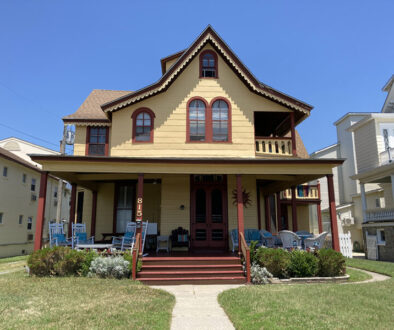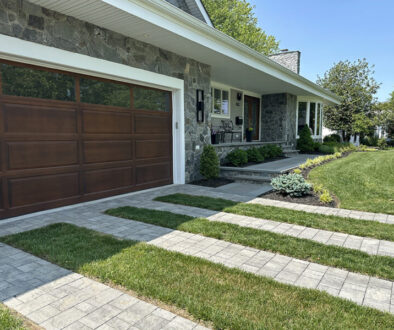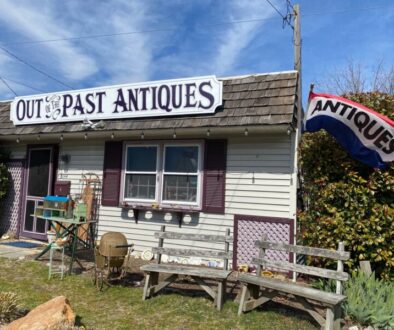Winterthur Museum, Garden & Library

Deep inside the main house at Winterthur, visitors will find a make-believe cityscape, complete with slate and cobblestone pathways, exterior building facades, wrought-iron lamps, and even trees. Each slat, stone, brick, and windowpane were taken from a historic home or tavern, then transferred to the Delaware home of Henry Francis (H.F.) du Pont and reassembled in a display he dubbed The Court.
A passionate conservationist and horticulturist, du Pont spent a lifetime amassing art, architecture, and even plants and trees to maintain them for posterity. Winterthur, his so-called “country place,” is a fitting repository for some 100,000 such objects: paintings and sculpture, glassware and silverware, textiles and metalwork in such profusion they can’t possibly be viewed in a single visit. According to American Heritage, this is “one of America’s most fascinating museums,” and “a foretaste of what Valhalla is really like.”


Set on 1,000 acres north of Wilmington, Winterthur has been likened to a European duchy, and indeed was named for the du Ponts’ ancestral home near Zurich. Its 175 rooms—bursting at the seams with antiques—are museum-like now. But certain features, like a gameboard in the corner of a parlor and a wooden cradle at the foot of a bed, are reminders that this sprawling manse once was a home. And what a home. The family had their own bowling alley, and the Court replaced an indoor badminton court.
Winterthur showcases American decorative arts spanning several centuries: furniture by Chippendale and Duncan Phyfe, silver tankards by Paul Revere, and oils by John Trumbull and Benjamin West, among other treasures. Perhaps the most famous architectural feature is the Montmorenci stairway, brought here in the 1930s from a North Carolina plantation.

Everything about this place is BIG. Winterthur is the fifth largest home in the country, with its own post office and zip code. There are 100 cottages on the grounds, some occupied by staff. The house, open to the public since 1951, now welcomes visitors from March through the first week of January.
While the house is eye-popping, the main attraction for many is the 800 acres of meadows, trails, woodlands, and streams. Some large-canopy trees are hundreds of years old, and the informal gardens are timed to bloom in sequence throughout the year. And members may walk these gorgeous grounds year-round.
“If someone could only visit once, I would say come when the azaleas are in flower,” says Linda Eirhart, senior curator of plants. “If they love daffodils, come in April. If they’re really into hydrangeas, wait and come in June.”

We visited in early spring, just missing the daffodils, but in time to see sweeps of bright color on the meadows in the form of Virginia bluebells and purple windflowers. Among the estate’s most charming features is the Enchanted Woods. This children’s garden includes a Troll Bridge, a giant Bird’s Nest, the droll Faerie Cottage and Acorn Tearoom, and the Tulip Tree House, carved from a century-old tulip poplar tree. It looks much like the pointed hat of a witch. The kids will love it.
By all means, take the tram car tour included with your admission. Our guide, Mike, knew everything about the surrounding gardens, and his love of the subject was evident. Speaking of the azaleas, he said, “When the buds pop out, they look like little flames sitting on the branches.” He described a flowering cherry tree as “a bonsai on steroids.” Mike told us du Pont was so devoted to his Holstein Friesian dairy cattle that he built tunnels under the roadways so they could cross safely. The herd is gone and so is the creamery, but Winterthur now has flocks of heritage Merino sheep and rescued goats that eat invasive plants.
“What we’re trying to do is stay true to Mr. du Pont’s design intent,” according to Eirhart, “so he could come back and say, ‘Oh yes, this is my garden.’”



Once you’ve made the tour, be sure to stop at the bright and airy cafeteria at the visitors’ center. Choose from grab-and-go sandwiches, wraps, paninis, salads, and the soup of the day (as a connoisseur of Kennett Square mushroom soup, I’m here to attest that Winterthur’s is the best I’ve ever tasted, hands down).
From September 9 through January 7, Winterthur will present “Ann Lowe: American Couturier,” a retrospective on the life and work of the Alabama-born designer who made gowns for Jacqueline Kennedy, Olivia de Havilland, Marjorie Merriweather Post, and the Roosevelts. It was Lowe who designed Kennedy’s iconic wedding gown, but at the time, she was identified only as a “colored dressmaker,” and was even asked to deliver her masterpiece at the service entrance (she refused and was admitted through the front door). Along with 40 original Lowe gowns, the exhibit will feature a reproduction of the Kennedy gown, with its intricate ruffled ivory silk taffeta skirt over a silk faille petticoat.
In his later years, du Pont wrote: “I sincerely hope that the museum will be a continuing source of inspiration and education for all time, and that the gardens and grounds will of themselves be a country place museum where visitors may enjoy as I have, not only the flowers, trees and shrubs, but also the sunlit meadows, shady wood paths, and the peace and great calm of a country place.”
His wish has been fulfilled at this grand estate. If you haven’t yet visited, add it to your must-see list. ν



